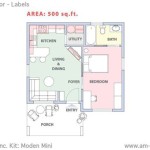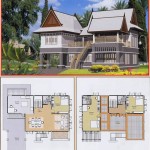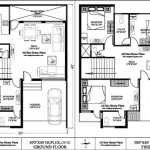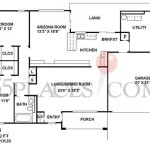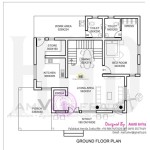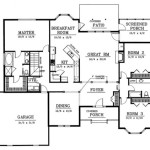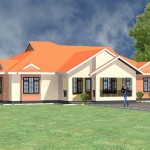Typical Japanese House Floor Plan: A Guide to Traditional and Modern Layouts
Understanding the layout of a typical Japanese house requires exploring both traditional and modern influences. While contemporary designs incorporate Western elements, the core principles of functionality, flexibility, and connection with nature often remain. This exploration delves into the key aspects of Japanese house floor plans, offering insights into their unique characteristics.
Key Features of Traditional Japanese House Floor Plans
Traditional Japanese houses, often referred to as "minka," prioritize adaptability and harmony with the environment. Several key features define these traditional layouts:
- Genkan (Entranceway): Serving as a transitional space between the outside world and the home's interior, the genkan is where shoes are removed and placed on a raised platform.
- Washitsu (Tatami Rooms): These multi-purpose rooms are characterized by tatami mats, which dictate the room's dimensions and provide a comfortable flooring surface. Washitsu traditionally served as living rooms, dining rooms, and bedrooms.
- Shoji and Fusuma: Sliding doors made of translucent paper (shoji) or opaque paper (fusuma) allow for flexible room divisions and control over light and privacy. These elements contribute to the adaptable nature of traditional Japanese homes.
- Engawa (Veranda): This covered outdoor space blurs the lines between inside and out, providing a place for relaxation and connection with nature. Engawa often wrap around the house, contributing to natural ventilation.
- Chanoma (Dining/Kitchen Area): Historically, the chanoma was the central living space, featuring an irori (sunken hearth) for cooking and heating. Modern chanoma often incorporate Western-style kitchens.
Modern Adaptations in Japanese House Floor Plans
While preserving some traditional aspects, modern Japanese house plans have evolved to accommodate contemporary lifestyles and space constraints. These adaptations reflect changing needs and preferences:
- Open-plan layouts: Combining living, dining, and kitchen areas into a single open space has become increasingly popular, promoting a sense of spaciousness and facilitating interaction.
- Western-style rooms: Designated bedrooms, often with Western-style beds and flooring, are common in modern Japanese homes, reflecting a shift away from the multi-purpose washitsu.
- Modern kitchens and bathrooms: Equipped with modern appliances and fixtures, these spaces prioritize efficiency and convenience.
- Space optimization: Due to limited land availability, particularly in urban areas, modern Japanese house designs often prioritize efficient use of space, incorporating built-in storage and compact furniture.
Considerations for Designing a Japanese-Inspired Floor Plan
Incorporating Japanese design principles into a floor plan can create a serene and functional living space. Consider these elements:
- Minimalism: Embrace simplicity and avoid clutter to create a calming atmosphere.
- Natural light: Maximize natural light through large windows and strategic placement of rooms.
- Natural materials: Utilize wood, bamboo, and stone to create a connection with nature.
- Flexibility: Incorporate adaptable spaces that can serve multiple functions.
- Connection with Outdoors: Design outdoor spaces that extend the living area and provide a place for relaxation and contemplation.
Common Room Layouts in Modern Japanese Homes
Modern Japanese homes, while diverse, often feature these common room layouts:
- LDK (Living, Dining, Kitchen): The combined LDK is a staple in many contemporary homes, fostering a sense of openness and connectivity.
- Separate bedrooms: Designated bedrooms offer privacy and personalized space for family members.
- Multi-generational living: Some homes incorporate separate living quarters for elderly parents or grandparents, reflecting a cultural emphasis on family support.
Impact of Space Constraints on Japanese House Design
Limited land availability, especially in densely populated urban areas, significantly influences Japanese house design. Architects and designers employ creative strategies to maximize space utilization:
- Vertical space utilization: Multi-story homes are common, maximizing living space on a smaller footprint. Loft spaces and split levels are also utilized effectively.
- Built-in storage: Integrated storage solutions, such as under-stair storage and built-in closets, help maintain a clutter-free environment.
- Compact furniture: Smaller-scale furniture and multi-functional pieces are often chosen to optimize space.
The Role of Sustainability in Modern Japanese House Design
Increasingly, sustainability plays a significant role in modern Japanese house design. Eco-conscious features are incorporated to minimize environmental impact:
- Energy efficiency: High-performance insulation, solar panels, and energy-efficient appliances reduce energy consumption.
- Natural ventilation: Strategic window placement and architectural design promote natural airflow, reducing reliance on air conditioning.
- Sustainable materials: Locally sourced and recycled materials are often prioritized, minimizing the carbon footprint of construction.

Typical Home Layouts Differences Between Japan And Abroad

Traditional Japanese House Floor Plan Google Search Architecture Japonaise Maison

The Layout Of Ground And First Floor A Traditional Japanese House Scientific Diagram

Japanese Home Design Ideas Pictures 331 Sqm Homestyler

Traditional Japanese House Plan Style Plans

Nice Traditional Japanese House Floor Plan Minimalist Home Design

Japanese Home Design Ideas Pictures 331 Sqm Homestyler
What Do The Blueprints Of A 1 Floor Traditional Japanese House Look Like Quora

Traditional Japanese Architecture Tea Ceremony Japan Experiences Maikoya

Traditional Japanese House Floor Plans With Drawings Upgradedhome Com

